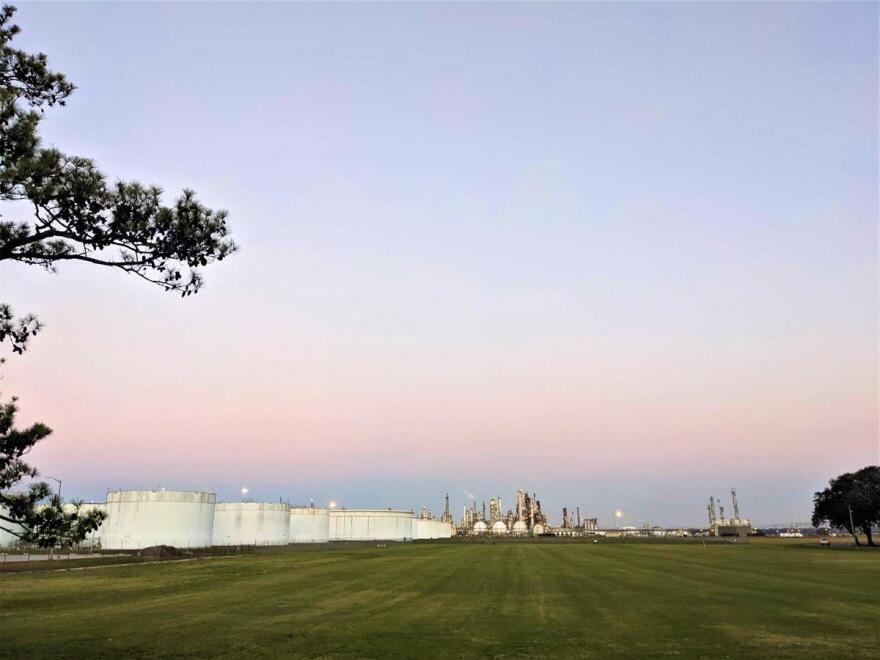Looking to attract federal money, Louisiana will partner with two other states — Arkansas and Oklahoma — to form a regional hub in developing “clean hydrogen,” the Governor’s Office announced Thursday.
The move comes after the Bipartisan Infrastructure Law dedicated $9.5 billion toward ramping up the use of hydrogen as fuel to cut carbon emissions and limit global warming. The bulk of that money — $8 billion — will fund at least four of what the law calls “Clean Hydrogen Regional Hubs.”
The three states would compete for the federal funding together, and, if awarded, share any information that comes out of the research within their universities or the private sector. Leaders of each state said their interests are aligned, already connected by pipeline networks, railroad and river transport as well as oil and gas production.
“This is an extension of Louisiana’s ongoing efforts in diversifying the makeup of our energy sources and ensuring an economically and environmentally balanced approach to cleaner use of traditional fuels and transition to new potential energy sources,” Gov. John Bel Edwards said in a press release.

The Department of Energy is looking for hubs in different areas of the country that could research different feedstocks for making hydrogen and sectors to use it in, according to the agency’s draft implementation strategy. In the first round, they’re looking to give hubs up to $1 billion.
It’s unclear when the Department of Energy will choose its hubs, but its deadline for proposals is March 21.
“Basically what this is doing is getting our states in a posture to be able to take advantage of whatever opportunities they do develop and put out there,” said Patrick Courreges, the Louisiana Department of Natural Resources’ communications director.
Louisiana’s industrial sector, which is widely considered to be the most difficult to decarbonize in the state, emits two-thirds of the state’s total greenhouse gasses. Officials believe switching plants to hydrogen power is critical if the state is to meet Edwards’ goal of achieving “net-zero” emissions by 2050.
Even the state’s recently passed Climate Plan calls for industrial plants to be electrified — meaning take power from the electrical grid — or use low- or zero-carbon hydrogen for fuel.
“When you're talking about using hydrogen as a feedstock, that's already happening. People are already using it,” Courreges said. “We're trying to get them to a cleaner way of producing.”
When burned, the element’s only byproduct is water, but the fuel is only as clean as the methods used to produce it.
Despite its abundance, hydrogen doesn’t exist on its own in nature; instead, the element must be extracted for use. Traditionally, that’s meant using steam to pull hydrogen from natural gas and letting the remaining carbon enter the atmosphere.
To combat this, companies want to use technology to capture most of that carbon, transport it in pipelines and shove it a mile beneath the Earth’s surface in a process known as carbon capture and sequestration. Industry groups call the product “blue hydrogen.”
One peer-reviewed study has suggested that methane — a potent greenhouse gas — released while drilling and transporting natural gas might make blue hydrogen worse for the environment than simply burning the gas used to create it, though industry and other researchers argue it oversimplifies the process.
Some environmental groups have also called carbon capture “unproven” as it’s uncertain whether storing carbon underground permanently is possible. They also argue these sites, and the pipelines needed for transport, are often situated near or in low-income or minority communities, perpetuating the placement of environmental hazards near vulnerable groups.
Because natural gas is used as feedstock, the push for producing hydrogen would also allow the oil and gas companies that back it to continue drilling.

Naomi Yoder, a scientist with the environmental group Healthy Gulf, said the term “clean hydrogen” in itself is misleading.
“There is no such thing as clean hydrogen,” Yoder said. “Right now, it still has to use fossil fuels to be produced, so any kind of climate solution around hydrogen is a false solution.”
Instead, she wants the focus to shift to finding money for scaling up renewable energy in Louisiana — not technologies that will consume more energy.
Hydrogen can also be produced by running an electric current through water, or electrolysis, separating it from the oxygen atom. If the electricity were produced with renewable energy, no carbon would be emitted in the process, and it would be considered “green hydrogen.” The Biden administration dedicated $1 billion toward research and development on using electrolysis.
Each state has already begun attracting companies interested in hydrogen production. Louisiana has a $4.5 billion blue hydrogen plant planned in Ascension Parish, and Oklahoma has a green hydrogen plant in the works.
Outside of the hub, Louisiana is also asking the Environmental Protection Agency to give it authority to grant carbon capture and sequestration projects in the state. Courreges said the state hopes this would avoid any permitting bottlenecks in the future, but the application is currently on hold.






